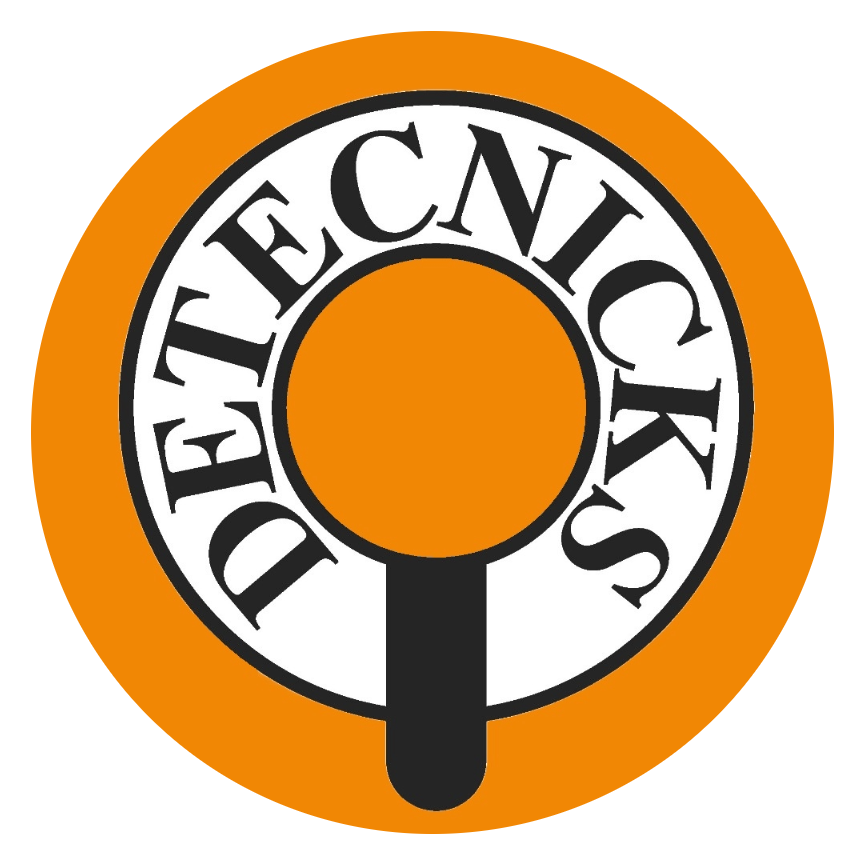The Appeal of Metal Detecting
Metal Detecting & Treasure Hunting has always held great mystique for many people. The thought of digging up buried treasure is now within the grasp of most people, due to modern electronic equipment.
For a modest outlay from as little as £59.99, you can find items with values ranging from a few pence to millions of pounds. In our long experience of the hobby we know this to be a fact. We have found very valuable items, and the machines we have used have paid for themselves many times over.
Your questions answered:
What is the difference between Motion & Non-Motion detectors?
Motion detectors are the more recent model of "switch on & go" machines, which first appeared in the early 1980's. Before this, all detectors were Non-Motion.
Non-Motion detectors are manually tuned, a very similar process to tuning a radio to your favourite station. Occasionally you need to retune as the signal may have drifted off station and this is what happens with a Non-Motion detector, but it can very simply be re-tuned, sometimes with an automatic re-tune button. The other defining characteristic of this kind of detector is that it runs with a faint hum as you scan the ground, giving a raised tone as you pass the head of the machine over a metallic signal. It will continue to give this raised tone when you hold the head of the machine static over the signal area. In other words it will still give a signal when there is NO Motion.
Motion detectors are automatically tuned machines and run silently as you scan the ground, when you pass the head of the machine over a metallic object it will "beep", but will only do so if the head of the machine is moving, all be it a slight movement. When the head stops moving so will the signal even if it is right underneath the search head. So MOTION is required to locate the target signal. These Motion detectors are simpler to use and many are fitted with a "pinpoint" switch to allow temporary conversion to Non-Motion Mode to help locate the target. The depth capability at one time was inferior to that of Non-Motion detectors, but advances in electronics have allowed them to successfully detect at greater depths, and now some of the deepest seeking detector models are Motion detectors. They also have benefitted in their discrimination abilities, which will be explained later.
How deep will I be able to locate targets?
A usual question, but quite hard to answer. There are many contibutory factors involved in answering this.
The size of the object. A larger pre-decimal penny will be located at a greater depth than a new decimal penny simply because of its mass.
How the object lies in the ground. If the same object such as a pre-decimal penny is lying flat it will be located at a greater depth than if it is on its side.
The type of object. Ring shaped objects can be picked up at great depths because the detector looks at the item as a solid. So a bangle will give a good signal at depth, but a torque with a greater amount of metal content, because it is not a complete ring will not, as the detector only picks up on the "terminal ball". The same would apply to chains, as each link although it appears to be a complete circle has in fact a small gap where it is joined to the next ring.
Finally soil conditions. Both moisture content and mineralisation affect the machines penetration abilities. If the soil is very dry or heavily mineralised, penetration will be reduced.
To sumarise, taking all these variables into account and dependant on which detector is used, locating a coin sized object should be possible at anything between 10cm(4") to 22.5cm(9"), with larger objects up to 1 metre(39").
What is discrimination?
A discriminating detector allows you to choose to set the machine to ignore small ferrous objects, such as nails. It can be set to ignore other metallic targets in the non ferrous range, such as silver foil and ring pulls, but if you choose to do this, you will also be cutting out signals from some valid items such as 9ct gold rings and some hammered silver coinage. The basic premise of successful detecting is to run the machine with minimal discrimination, cutting out only small iron objects and accepting everything else. Some machines allow you to accept an audio signal from a ferrous object, but visually show that the item is in fact ferrous, or give an alternative tone id for this signal. This can be beneficial, as it tells you more information about the area you are searching. Iron contaminated sites, usually have many valid targets as well, as the iron shows usage of the area. Additionally iron signals can mask "good" targets and if you are detecting an area you know is heavily iron infested you should work more slowly to allow your machine to pick out those valid signals.
Are Metal Detectors Difficult to Operate?
Yes and No! Most are quite simple, both Motion & Non-Motion. Some top of the range machines however are not as "switch on & go" as they suggest, especially if you want to get the most out of them. We are happy to advise you on this aspect, as well as each machines suitabililty for usage in certain areas.
What does Mineralisation or Ground Effect Mean?
The ground contains quantities of iron oxides of which some soils are more prolofic than others. These oxides have built up over many centuries on land mainly worked and farmed by humans. Other land can contain magnetic iron oxides, which are purely natural. Metal detectors are affected by this ground mineralisation and this is referred to as ground effect. Beaches also have a ground effect caused by the electrical conductivity of salt water.
Can you use a detector on the beach as well as inland?
Yes, Dry sand is the same as detecting on an inland site. Wet sand is however different, being known as conductive. Non-Motion detectors are used successfully on wet sand with no problem. Motion detectors can be inappropriate apart from a selected few which have been manufactured to cope with this effect. Please ask advise as to suitable models if you wish to detect with a motion detector on wet sand.
Do you need a license to use a metal detector?
No, the Home Office scrapped licenses in 1980.
However it is now required on some beaches that a permit be obtained.
Further information can be obtained from the Crown Estates website and the permit applied for online through a link on the detecting page.
Apart from the detector, what else would I need to get me going?
- Power-Batteries, usually alkalines and supplied within the purchase price of the machine.
- Scuff Cover-protects the search head of the machine from knocks & bangs-cheaper to replace than the search head itself.
- Headphones-a basic pair are frequently provided in the purchase price, but a better quality set can reduce external noise interference and enhance those deeper signals. Using headphones also saves battery usage as the speaker is not powered.
- Digger- A digging implement of some kind, to recover those positive signals!
What beginners literature would you suggest?
Have a look at our Books page, where there is a beginners section.
New code agreed for Metal Detectorist' - 2nd May 2006
BRITISH MUSEUM ANOUNCEMENT
We are delighted to announce that a Code of Practice on Responsible Metal Detecting in England and Wales has been agreed by all key archaeological bodies and metal detecting and landowners' organisations. This is the first time that these bodies have joined together to precisely define responsible metal detecting and provides a clear and unambiguous definition of what constitutes good practice.
The signatories are the National Council of Metal Detecting, the Federation of Independent Detectorists, the Country Land and Business Association, the National Farmers Union, the Council for British Archaeology, English Heritage, National Museums and Galleries of Wales, Museums, Libraries and Archives Council, The British Museum, the Portable Antiquities Scheme, the Society of Museum Archaeologists and the Royal Commission for the Ancient and Historical Monuments of Wales. The agreement is voluntary but has the full endorsement of the signatories and all parties are committed to ensuring its members abide by the advice set out in the document.
The agreement covers three aspects of metal detecting. The first section, ' Before you go metal-detecting', states you must obtain permission to search from the landowner, adhere to laws concerning protected sites, join an official metal-detecting club and follow conservation advice. 'Whilst you are detecting' states that findspots should be recorded as accurately as possible, that ground disturbance should be minimal and that the Country Code should be respected. Finally it offers advice on procedures after you have been detecting. Any and all finds should be reported to the landowner and the Portable Antiquities Scheme, detectorists must abide by the provisions of the Treasure Act and must seek expert help if they find something large or an object made from unusual material and that they must call the police if they discover any human remains.
It is hoped that the Code, alongside the Treasure Act legislation will ensure that situations like that at Wanborough where the site of a Romano-Celtic temple was decimated by unscrupulous treasure hunters will not happen again. There have been many cases, particularly recently, of responsible reporting of finds which have been of invaluable use to the archaeological record, the Ringlemere Gold Cup, the Winchester Hoard and the Staffordshire Moorlands Pan are but a few examples. The continuation of good relations between archaeologists, museums and metal detectorists as embodied by the Code will build on these examples and form the model for the future.
Dr Mike Heyworth, Director - Council for British Archaeology, commented:
"This Code represents a major step forward. It builds on earlier efforts to provide guidance to all users of metal detectors. It emphasises the positive contributions that responsible metal detectorists can make to the study of the past through the knowledge we can obtain from finds and their archaeological contexts. The Code also serves to emphasise the distinction between responsible metal detectorists and the minority of irresponsible individuals who use their equipment for personal gain".
Steve Critchley, Chairman - National Council for Metal-Detecting, said
"This Code is both fair and practical. By adhering to this Code the vast majority of metal-detectorists will be able to demonstrate that they have a genuine interest in the past and wish to benefit from the knowledge they gain from their hobby. The National Council for Metal Detecting will be replacing its exiting Code, a part of its Constitution, with the new one. Adherence to the Code when metal detecting is a condition of membership".
For further information please contact Hannah Boulton in the Press Office on 020 7323 8522 or hboulton@thebritishmuseum.ac.uk
Notes to Editors:
The Code of Practice on Responsible Metal Detecting has been endorsed by the British Museum, the Council for British Archaeology, the Country Landowners and Business Association, English Heritage, the Federation of Independent Detectorists, the Museums, Libraries & Archives Council, the National Council for Metal Detecting, the National Farmers Union, the National Museum Wales, the Portable Antiquities Scheme, the Royal Commission on the Ancient and Historic Monuments of Wales and the Society of Museum Archaeologists.
The Code is available online at:
https://www.finds.org.uk/documents/CofP1.pdf
The Portable Antiquities Scheme is a voluntary scheme to record archaeological objects found by members of the public in England and Wales. Every year many thousands of objects are discovered, many of these by metal-detector users, but also by people whilst out walking, gardening or going about their daily work. Such discoveries offer an important source for understanding our past. The Scheme is run and administered from the British Museum. More information can be found on www.finds.org.uk
Our useful Info page contains info about membership contact details for FID and NCMD as well as other useful sites







